(Psst: The FTC wants me to remind you that this website contains affiliate links. That means if you make a purchase from a link you click on, I might receive a small commission. This does not increase the price you’ll pay for that item nor does it decrease the awesomeness of the item. ~ Daisy)
The other day, Aden wrote about places to get free eBooks, and little did I know what a goldmine I would stumble upon in one of those locations. The Facebook page Mind4Survival (be sure to follow them if you’re on FB) shared a link to a 1918 cookbook called Foods That Will Win the War. It can be found for free at that link on Gutenburg.org. The cool thing about it is that a lot of this wartime food can help us with the problems we face today, such as inflation and supply chain issues.
A quick history lesson on wartime food
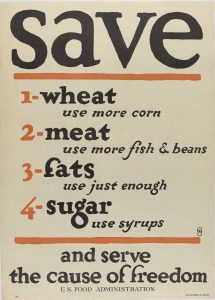 During World War I, President Herbert Hoover created the US Food Administration to change the way Americans ate so that there was enough food to fuel our soldiers. His campaign was everywhere and encouraged homegrown food as well as alternatives to regular dietary staples, using every scrap of food, and making some rather unusual choices.
During World War I, President Herbert Hoover created the US Food Administration to change the way Americans ate so that there was enough food to fuel our soldiers. His campaign was everywhere and encouraged homegrown food as well as alternatives to regular dietary staples, using every scrap of food, and making some rather unusual choices.
“This included conserving wheat, meat, sugar, and fats, so those items could be sent overseas. The Administration advocated using alternatives like honey or molasses for sugar and corn or barley for wheat. They educated with memorable slogans, such as “when in doubt, eat potatoes” and “help us observe the Gospel of the clean plate” and invented “Meatless Mondays” and “Wheatless Wednesdays.” To free up transportation for war supplies, they encouraged buying locally produced food, or better still, growing liberty gardens.” (source)
They got women and children involved in the effort too, with the Women’s Land Army of America – a group of women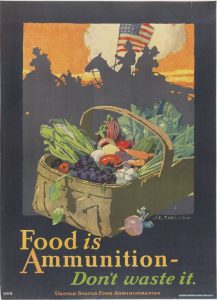
Another government agency, The National War Garden Commission, presented gardening as your patriotic duty. Their goal was to “arouse the patriots of America to the importance of putting all idle land to work, to teach them how to do it, and to educate them to conserve by canning and drying all food they could not use while fresh.” Their efforts resulted in more than 5 million Liberty Gardens nationwide.
The government’s efforts focused on reducing consumption of meat, wheat, fat, and sugar so it could be shipped overseas, and eating locally so that precious fuel was also conserved. They also devoted resources to teaching people how to preserve any excess food so it wouldn’t go to waste.
While it was a massive propaganda campaign, it worked, and a lot of the advice can help with modern-day problems we’re facing right now. High prices, shortages, supply chain breakdowns, and a limited workforce means that we may need to change how we eat.
What is Foods That Will Win the War?
The book Foods That Will Win the War is based on all the premises mentioned above. In the foreword, the authors wrote:
Food will win the war, and the nation whose food resources are best conserved will be the victor. This is the truth that our government is trying to drive home to every man, woman and child in America. We have always been happy in the fact that ours was the richest nation in the world, possessing unlimited supplies of food, fuel, energy and ability; but rich as these resources are they will not meet the present food shortage unless every family and every individual enthusiastically co-operates in the national saving campaign as outlined by the United States Food Administration…
…A little bit of saving in food means a tremendous aggregate total, when 100,000,000 people are doing the saving. One wheatless meal a day would not mean hardship; there are always corn and other products to be used. Yet one wheatless meal a day in every family would mean a saving of 90,000,000 bushels of wheat, which totals 5,400,000,000 lbs. Two meatless days a week would mean a saving of 2,200,000 lbs. of meat per annum. One teaspoonful of sugar per person saved each day would insure a supply ample to take care of our soldiers and our Allies. These quantities mean but a small individual sacrifice, but when multiplied by our vast population they will immeasurably aid and encourage the men who are giving their lives to the noble cause of humanity on which our nation has embarked. (source)
The wartime cookbook offers abundant advice on conserving food, using alternative protein and grain sources, and saving things that most folks throw out. The recipes are extremely flexible, making them perfect for using what you have on hand.
What’s included in this wartime cookbook
The table of contents is below:
SAVE WHEAT: Reasons Why Our Government Asks Us to Save Wheat, with Practical Recipes for the Use of Other Grains
- A General rule for proportions in bread-making
- Use of Corn
- Use of Oats
- Use of Rye
- Use of Barley
- Use of Potatoes
- Use of Mixed Grains
- Pancakes and Waffles
SAVE MEAT: Reasons Why Our Government Has Asked Us to Save Meat, with Practical Recipes for Meat Conservation
- Selection of Meat
- Methods of Cooking 34, 35
- Charts 36, 37
- Comparative Composition of Meat and Meat Substitutes 38
- Economy of Meat and Meat Substitutes
- Meat Economy Dishes
- Fish as a Meat Substitute
- Fish Recipes
- Cheese as a Meat Substitute
- Meat Substitute Dishes
SAVE SUGAR: Reasons Why Our Government Asks Us to Save Sugar, with Practical Recipes for Sugarless Desserts, Cakes, Candies and Preserves
- Sugarless Desserts
- Sugarless Preserves
SAVE FAT: Reasons Why Our Government Asks Us to Save Fat, with Practical Recipes for Fat Conservation
- To Render Fats
- Various Uses for Leftover Fats
SAVE FOOD: Reasons Why Our Government Asks Us Not to Waste Food, with Practical Recipes for the Use of Leftovers
- A Simple Way to Plan a Balanced Ration
- Table Showing Number of Calories per Day Required by Various Classes
- Sauces Make Leftovers Attractive
- Use of Gelatine in Combining Leftovers
- Salads Provide an Easy Method of Using Leftovers
- Use of Stale Bread, Cake and Leftover Cereals
- Soups Utilize Leftovers
- All-in-one-dish Meals—Needing only fruit or simple dessert, bread and butter to complete a well-balanced menu
- Wheatless Day Menus
- Meatless Day Menus
- Meat Substitute Dinners
- Vegetable Dinners
- Save and Serve—Bread; Meat; Sugar; Fat; Milk; Vegetables
- Blank Pages for Recording Favorite Family Recipes
How to use this eBook
You can save this to your regular eBook reader but if you’re like me, you’ll want a printed copy. I’ve found that when I want to print out 100 pages or so, it’s far less expensive to send it over to my nearest Staples or Office Max and have it printed for 5-10 cents per page. I’d much rather use their ink than replace my expensive cartridge.
I print my copies out and use my three-hole punch to put them in a binder.
What do you think of the wartime cookbook?
Did you find some creative inspiration in this wartime cookbook from 1918? Are there some recipes you’re planning to try or ones that you already make? Let’s talk about it in the comments.
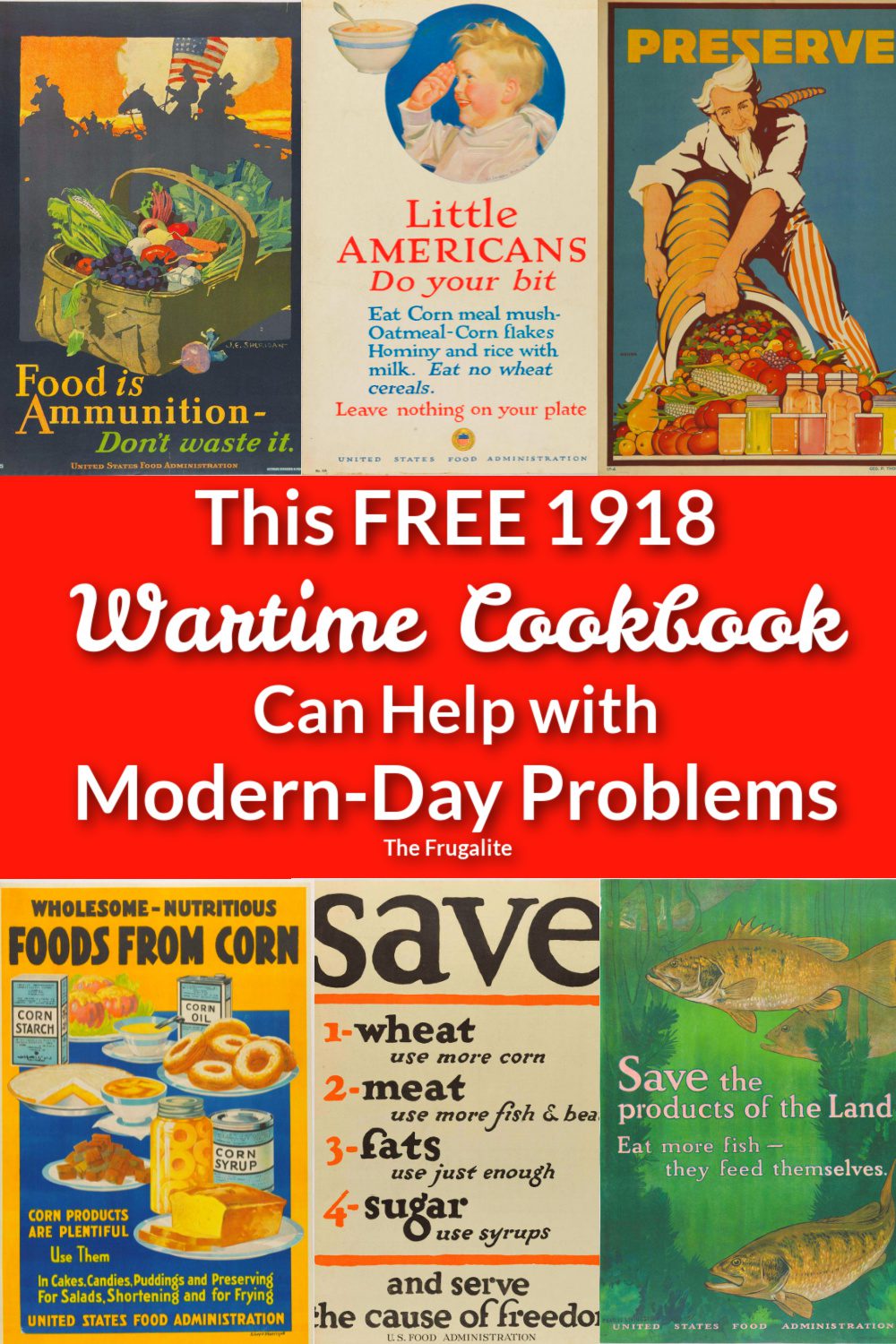

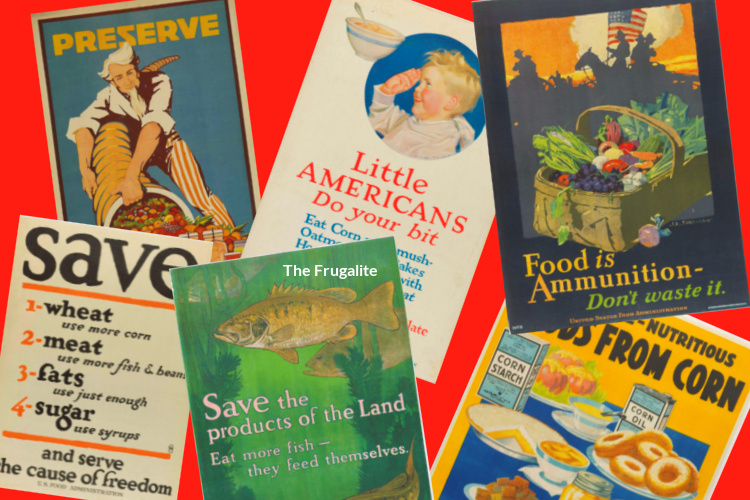




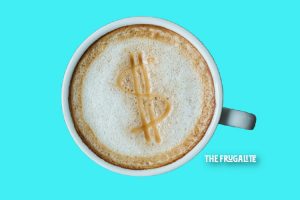

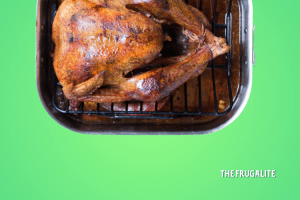
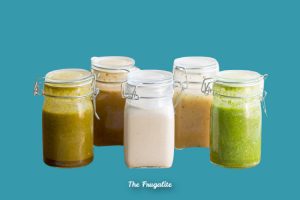

18 thoughts on “This FREE 1918 Wartime Cookbook Can Help with Modern-Day Problems”
I discovered another one recently: my family won’t eat potato skins in their mashed potatoes. I still cook them with the skins on, but then I peel the skins and chop them finely to use as a partial ground beef substitute in my next casserole. I also use crumbled TVP for that, so I could effectively get by on about 1/3 of the meat as before, if I used 1/3 of each of these items. I haven’t tried it yet, but they couldn’t tell a difference with just the cooked and chopped potato skins substituted in.
Its also available on Amazon for their Kindle (0.00) as well as a paperback for $5.86.
Foods That Will Win The War: And how to cook them https://www.amazon.com/dp/B0863R78Z1/ref=cm_sw_r_cp_api_glt_i_W7WR08Z068HB1W2J27AP
Thank you Jim for sharing. A real Frugalite find.
Isn’t it something that 80 years ago, government was begging everyone who could to grow a garden, while in modern times people are being penalized for doing so? Crazy! But thanks for the book! I’ll be sure to share it.
The government isn’t penalizing, it is HOAs – for some reason, gardens, rain barrels, and clotheslines give the impression of being “poor”. And not just HOAs – I live rural and one insecure homeowner in the neighborhood didn’t want his spouse to have a garden or clothesline on their property. Yet expected her to pinch pennies like he got paid minimum wage, not a six figures.
A lot of good WWII books out there too. I’ve made a no egg/sugar/wheat flour cake which was pretty tasty (I need to see if I can find my copy). Liberty garden, victory garden – both fulfill the same goal.
I downloaded this book. It will be interesting to try some of the recipes. I recieved 9 old cookbooks from my Mother-inlaw about 15 years ago. They span from 1921 to 1957. I will be looking through them again with fresh eyes.
After 65 years of cooking I’ve had to learn alot of inventive ways to make a dollar stretch. But I’m always up for new ideas.
Thanks I enjoy most of your posts.
I found a web site where an English woman created recipes based on WWII rationing in the UK. It was called the 1940s Experiment. Fascinating read.
Thank you for sharing. I will definitely look for that!
There is a BBC show on YouTube called “WarTime Farm”. It demonstrates how the countryside struggled to feed the U.K., after the Nazis blockaded the island. It is one in a series of living history shows produced by the BBC. https://www.youtube.com/watch?v=CUsU5s0ofYo
Some wartime family recipes include using stale sliced or French bread. You dip it in raw eggs to which you’ve added cinnamon, honey, nutmeg, vanilla and milk. Lightly fry on both sides and put honey on top. It’s called Lost Bread.. Delicious! Another recipe is when you make a gumbo and lack enough meat, you add in hard boiled eggs for added protein. Leftover grits can be fried so as not to throw it away.
my mom was a smoky mountain hillbilly, and she used to fry slabs of leftover grits all the time. it was one of my favorite breakfast foods!
Isn’t Lost Bread just French Toast ? Maybe the name was changed to make it more appealing or exotic. My late Mother, born in 1920, grew up on oatmeal & corn meal mush for breakfast. My grandmother would then fry any leftover oatmeal or mush and serve it for lunch with home canned fruit or as a side for dinner. Did the same with leftover mashed potatoes.
What a fun cookbook — and some great tips and recipes. I have my grandmother’s recipe box — pretty sure many of these recipes, or variations, are in there. Thanks for sharing. I’m going to try to figure out how to save/print it. I also have my great-grandmother’s cookbook — guess I’ll go look at it and see what other ideas it has — it would be about WWI era and before. I love the old “cook from scratch” recipes — well, except for the “put all the leftovers in gelatin and call it a salad” — I remember those and they still aren’t very appetizing. One of the things that stood out to me was the statement that putting sauces on “insipid” tasting foods like pasta and rice improved their flavor and makes them more appealing. I love the language in old cookbooks!
This article about the most expensive liquids in the world
https://beyondtype1.org/the-10-most-expensive-liquids-in-the-world/
mentions that printer ink runs about $2,700 per gallon!
That’s why many years ago I switched from using my old black and white ink jet printer and have been using a vastly cheaper toner cartridge printer ever since. Although I did acquire a color toner printer, I found that I hardly ever needed it. So I didn’t bother to even hook it up when I changed computers quite a few years ago. So if today I needed to print out a color book like that 1918 cookbook (which would be ideal to lay flat in the kitchen with the three-hole punched system to cooperate), I’d use a local service just as Daisy has described — while coming from a different frugalite strategy. I parked my old inkjet printer long ago as grossly uneconomical.
But if that 1918 book had been a black and white only cookbook, I’d happily print that at home with a B&W toner printer.
–Lewis
Just a minor nitpick, but Herbert Hoover wasn’t elected until 1928. During WW1 he headed the United States Food Administration. It was a position he lobbied for with contacts in Woody Wilson’s administration, largely to raise his profile. As I remember, he got the nickname “food czar” 🙂
True. Woodrow Wilson was the president at the time. Hoover didn’t become president until 1928, after service as Secretary of Commerce from 1921-1928 under President Coolidge.
And yes, he lobbied for the position, but it was after he had headed up the committee that was formed in 1914 to get relief sent to the 100,000 Americans who were in Europe when the war first started.
The Wisconsin Electric Company (now called WE Energies) gives out cookie books for Christmas every year. They started this tradition in 1932 and you can access all the past books in PDF form at https://www.we-energies.com/recipes/
Check out the 1964 book. That house on the cover is right out of my childhood! We used to go for a ride at Christmas time to look at the decorations. Great memories!
The calorie recommendations are interesting. A sedentary woman should have 2400 per day! Today that would be less than 1800.